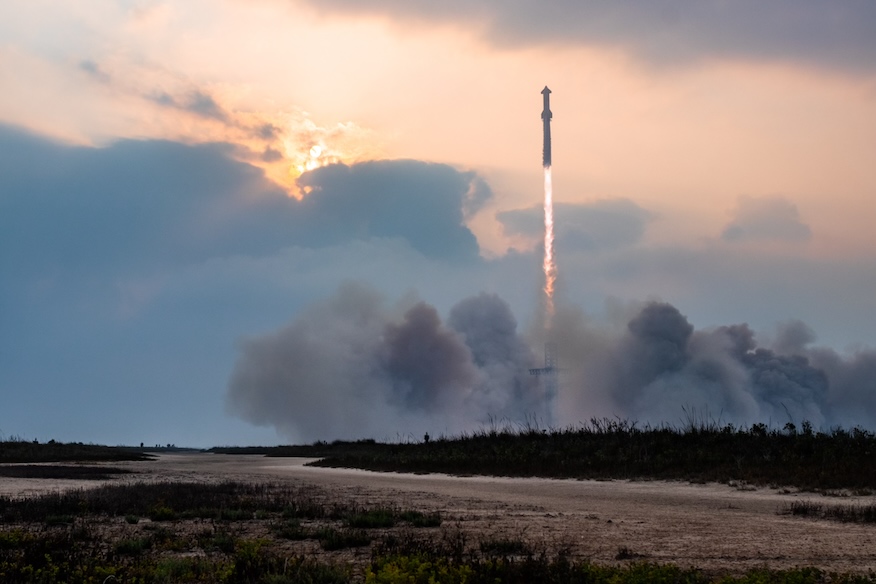SpaceX Starship Reentry: Successful Splashdown Marks Major Milestone
In a groundbreaking achievement, SpaceX’s Starship has successfully reentered Earth’s atmosphere and splashed down in the Indian Ocean after its fourth test flight. This significant milestone brings the company closer to its ambitious goal of creating a fully reusable rocket capable of carrying humans to the Moon and Mars.

On June 6, at 7:50 a.m. CDT (8:50 a.m. EDT, 1250 UTC), SpaceX launched its massive Starship rocket from Starbase, its development facility in southern Texas. Dubbed Flight 4, the mission was a critical test of the Starship’s reusability and ability to withstand the extreme conditions of reentry.
The two-stage spacecraft, consisting of the Starship upper stage (Ship 29) mounted atop the Super Heavy Booster (Booster 11), embarked on a suborbital trajectory without a payload. Despite challenges faced during previous missions, both stages managed a controlled descent and soft splashdown — the booster in the Gulf of Mexico and the upper stage in the Indian Ocean.
SpaceX founder Elon Musk highlighted the mission’s primary objective: to push the vehicle deeper into the atmosphere during reentry, testing it under maximum heating conditions. Following the successful mission, Musk celebrated on social media, noting that Starship “made it all the way to a soft landing in the ocean” despite significant damage, including the loss of many tiles and a damaged flap.
This achievement is a notable improvement over Flight 3, where the upper stage rolled uncontrollably and failed to relight one of its Raptor engines. Enhanced roll control thrusters and upgraded hardware for propellant filtration were key modifications implemented for Flight 4, addressing issues such as valve clogging and oxygen turbopump pressure loss.
Flight 4 also holds importance for NASA, as Starship is set to play a central role in the Artemis 3 mission, targeting a Moon landing in September 2026. Lisa Watson-Morgan, manager of NASA’s Human Landing System (HLS) program, praised the progress made by SpaceX, emphasizing the successful demonstration of propellant transfer — a critical component for future missions to the Moon and beyond.
In addition to demonstrating technical capabilities, the mission marked the first time SpaceX performed a controlled descent of the Super Heavy Booster, showcasing advancements in landing and recovery operations. This capability is essential for the rocket’s reusability and long-term sustainability.
The FAA’s approval of the flight and subsequent successful performance could expedite the announcement of Flight 5, which aims to achieve another ambitious milestone: catching the Super Heavy Booster using the launch tower’s “chopsticks.”

